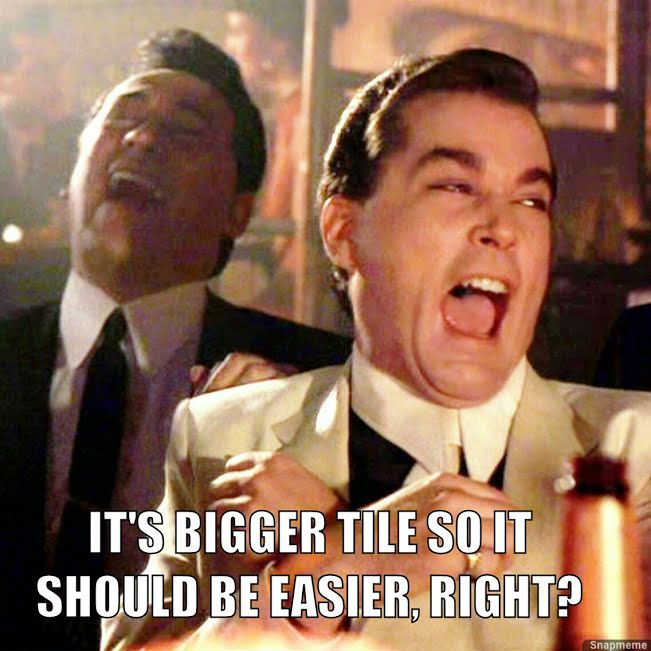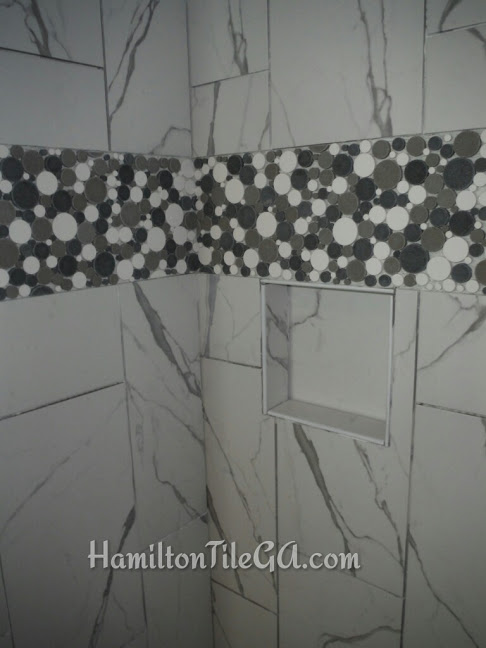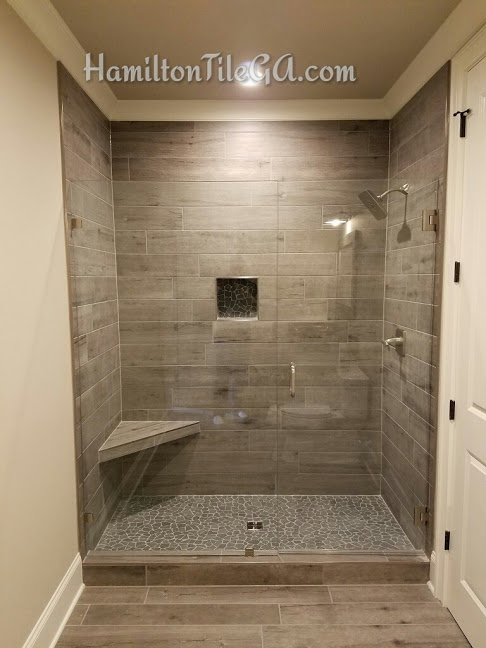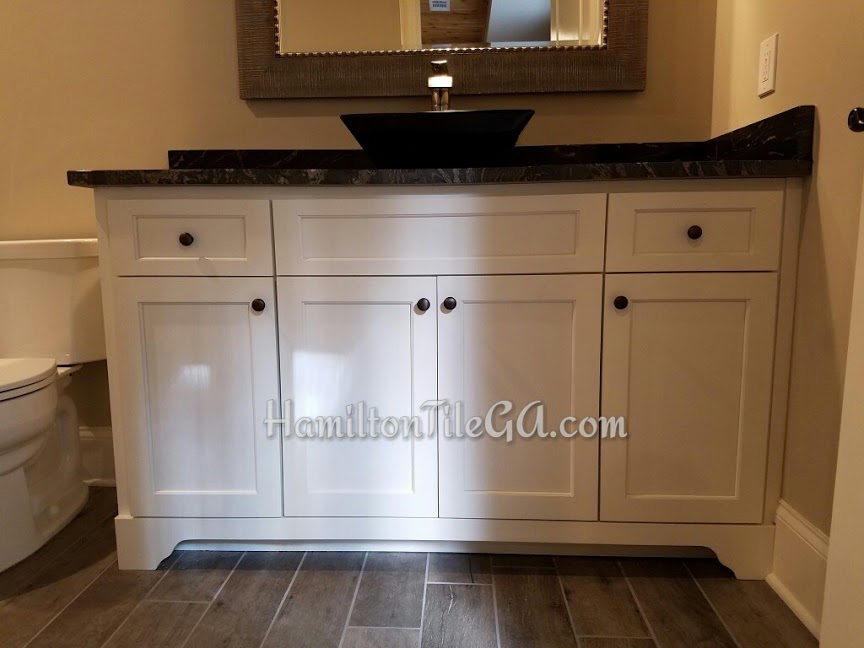I was at the tile store the other day and I was looking around at all the happy faces doing their tile shopping. I'm sure some are shopping for a back splash, others maybe for a bathroom remodel. I was left to wonder a very common question in my mind, "Who's installing all this tile!?"
While I was there I noticed many people looking at 6" x 36" plank tile (large format tile). Wow, the stuff looks great and you can tell the excitement in their eyes about possibly having that tile in their home. My main question to myself was:
"Has anyone talked to these people about the added cost of floor preparation for large format tile???"
There's added cost for big tile you ask?... The long and short of this is YES! The Tile Council of North America handbook states that....
"For tiles with at least one edge 15" in length or longer, a maximum allowable variation of 1/8" in 10' from the required plane, with no more than 1/16" variation in 24" when measured from the high point in the surface" (Page 31 TCNA Manual 2016)
So what this means is you cannot have a wavy floor and install a big tile! As the tile size increases, the effect of the floor irregularities is compounded. If there is a bump or dive in the floor it will make it impossible to install large tile. You will have lips and poor coverage and support under the tile.
I have found that very few homes have wood or concrete substrates that are ready out of the box for large tile. EVERY floor needs some degree of prep.
Prep, is short for "preparation". Meaning, flattening or leveling the floor to get it ready for whatever material you're hoping to install.
When we show up to a large area where we know large format tile will be set, what we'll do is take out a large straight edge, 8'+. We set it on the floor and decide what kind of prep will need to be done. Many times if there is flooring already down you won't know what needs to be done until the old flooring is up. This adds a bit of a mystery to the installation process and you need to make sure your builder gives you an allowance or find out if the unexpected labor is in his/her price. Many tile people won't tell you about the added costs until the tear out is done, and hit you with the extra cost! This is why I'm writing this post!
If you do indeed have a wavy floor there are a couple ways to fix the problem...You can self level the area, which will raise the level of the floor by as much as a quarter inch (think transitions between rooms) or you can use a product like Feather Finish by Ardex to fill the low spots, or you can grind the high spots. Or you may have to do a combination of all those things! The repair of the floor is where it is SO important to have a skilled, experienced tile installer. As I always say, the quality of the finished tile job is determined before any tile is ever set! Below is an example of our work where we used Lev-Tec leveling system to help get the flat floor:






















































